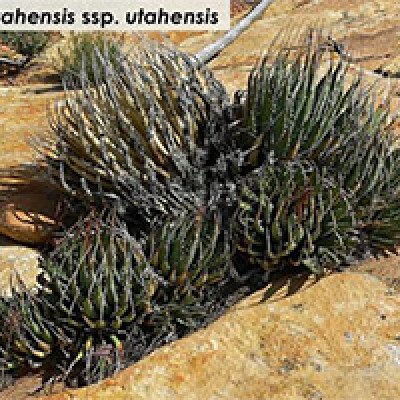Agave Utahensis



Utah agave (Asparagaceae) and its putative subspecies, A. utahensis subsp.kaibabensis (McKelvey) Gentry and A. utahensis subsp. utahensis, play critical roles as keystone taxa in their native habitats. Utah agave contributes significantly to soil formation and the creation of oases of organic matter in the Mojave Desert and Colorado Plateau in the southwestern United States. The rise in frequent and intense fires across the distribution of Utah agave is threatening native populations and consequently the genetic diversity of the species. Taxonomic questions exist concerning the subspecies ranking within this highly variable species complex. The subspecies ranking of the two Utah agave (subsp. kaibabensis and subsp. utahensis) is based solely on morphological traits, with subsp. kaibabensis having wider and greener leaves (3.0–5.5 cm) and larger rosettes (40–100 cm) than subsp. utahensis (1.0–3.0 cm, 15–40 cm, respectively). DNA marker information will help characterize the genetic diversity of the Utah agave species complex and confirm whether subspecies ranking is justified.
Agave Research Publications
For additional information regarding our Agave genetic research contact Dr. Ryan Stewart (BYU).
Byers C, Maughan PJ, Clouse J, Stewart JR (2014) Microsatellite primers in Agave utahensis (Agavaceae), a keystone species in the Mojave Desert and Colorado Plateau. Appl. Plant Sci. 2(9): 1400047.